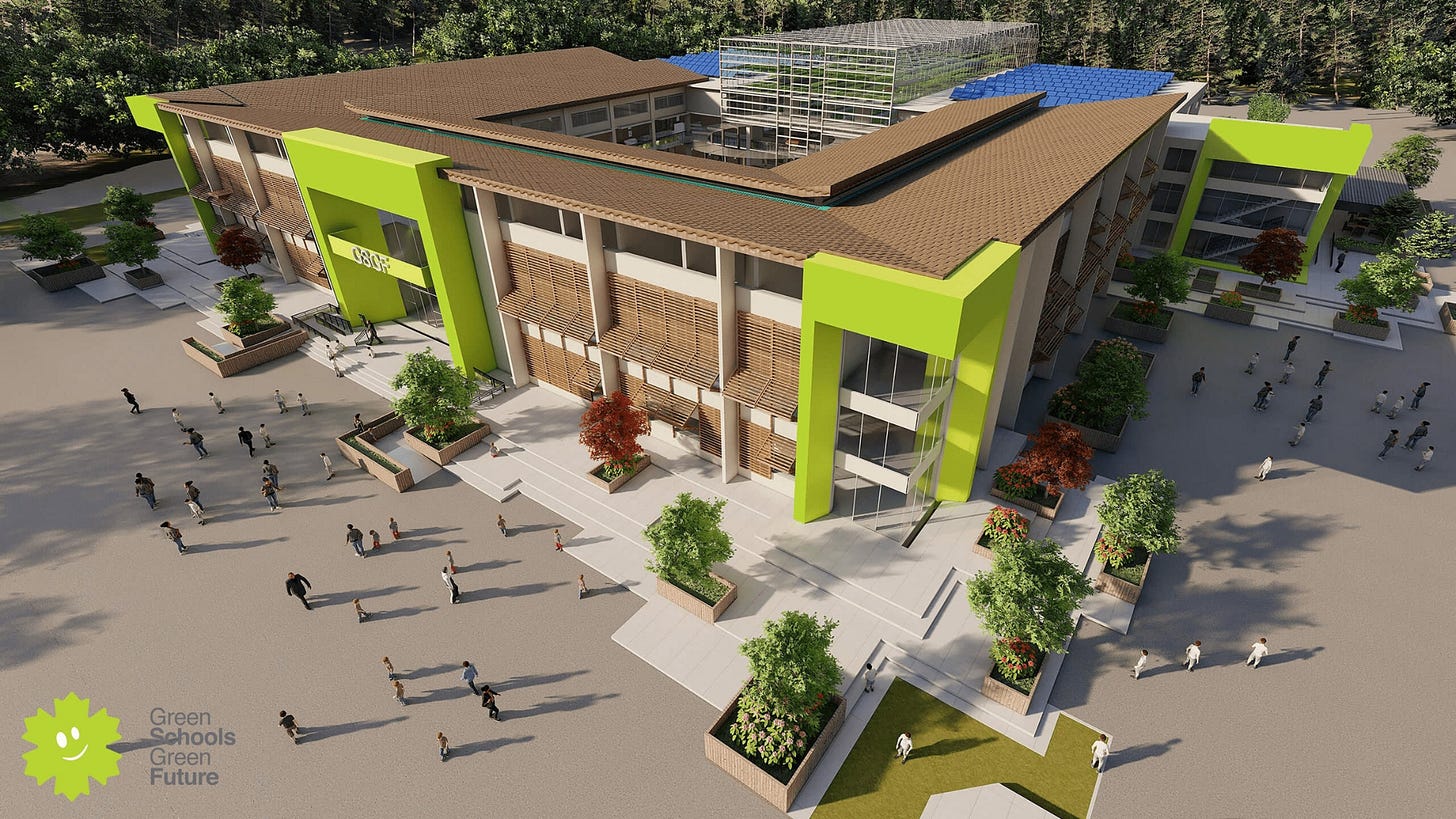Back to school, forward for climate
Students call for climate action, extreme heat threatens schools, and resources for a greener campus
Last week, I talked about how sheep raised on pastures with solar panels actually grew higher quality wool. It turns out that grapes grown alongside solar panels also see yields of up to 60 percent higher, according to two pilot programs launched by French agrivoltaics company Sun’Agri in Domaine de Nidolères in the Pyrénées-Orientales last year.
The shade provided by the panels kept temperatures lower than normal, increased the local humidity, and made the grapes require less water. Isn’t that amazing?
It’s back-to-school season in the Northern Hemisphere, so this week’s news is all about students!
In Colorado, students successfully lobbied the State Board of Education to incorporate more education about climate change into the state’s science standards for K through 12 public school students. The state board voted 7-2 to adopt the new standards, which must be implemented by districts statewide within two years.
This effort was spearheaded by Aisha O’Neil, a CU Boulder student who founded the Good Trouble Climate Network, which aims to unite sustainability clubs throughout Colorado. The network currently includes 15 clubs and 10 organizations.
Colorado isn’t the only place in the United States where student activism is leading the way on climate. In Oregon, a teenager named Mikayla May lobbied legislators to pass House Bill 3365, which requires schools in the state to “include an interdisciplinary approach to sustainability and climate change across all subjects.” The Oregon governor signed the bill into law this past June.
"Climate action requires communities to come forward and fight together, so the more people we can get involved the better,” says Mikayla, a student at Caldera High School in Bend. “It’s definitely helped with my anxieties about climate change.”
I’ve shared before how extreme heat and wild weather are upending how children attend school around the globe. A massive heatwave in Asia last May led to 47,000 schools across the Philippines being closed, while flooding in Nepal last fall closed schools there as well. A UNESCO report last year found that extreme heat alone could cause children to miss out on as much as 1.5 years of school over the course of their childhoods.
Children are physically more vulnerable to extreme heat than adults, and exposure to extreme heat can impact school performance, too. One study found that students taking the New York City public high school exit exam on a day with high temperatures of 90F (32C) were 11 percent less likely to pass than those who took the test on a 72F (22C) day.
In the United States, some 36,000 public schools do not have AC systems that can keep up with cooling in today’s extreme heat. In the UK, where many schools lack air conditioning, a climate non-profit placed sensors in classrooms across the United Kingdom and found that indoor temperatures during heat waves registered as high as 36C (97F).
To keep classrooms cool, governments around the world are investing millions into painting school roofs white, installing air conditioning, and planting trees on campuses. According to UNESCO, over 80,000 schools in 87 countries have pledged to enact climate-friendly adaptations. “Exposure to heat has significant detrimental effects on children’s educational outcomes,” says Audrey Azoulay, director-general of UNESCO.
Schools are some of the largest energy users in many communities -- and a major opportunity for climate progress. With new funding and incentives now available (that’s what I talked about last week), schools can access grants to install solar panels, heat pumps, battery storage, and more.
Wherever you live, you can make a difference by contacting your local school board, superintendent, or facilities director and encouraging them to apply for these programs. There are plenty of resources to help you get started. Here are just a few examples:
In the U.S., you can get involved with Generation180’s campaigns, Solar for All Schools and Electrify our School Buses that have resources based on your state. There’s also the national U.S. Green Schools network.
In the UK, the Let’s Go Zero campaign and Salix Finance grants support decarbonizing the public sector while the Green Schools Project has lots more school-specific info.
In Canada, there’s the Green Schools Green Future initiative, and you can learn more about energy benchmarking for your school.
Globally, there's the Eco-Schools network and UNESCO's Greening Education Partnership that's helping schools take climate action around the world.
If your local school hasn't started exploring these options yet, you could be the person who puts it on their radar and even helps them get going!









It’s certainly encouraging to read about students—students, not faculty or administration—taking the initiative on climate change. I don’t know what letter of the alphabet this generation of high schoolers is called, but way to go!
Love the back to school post! The great thing about schools using so much energy is that they also stand to save TONS of money by adding solar and electrifying. For example, just recently in PA, a school district will save $4 MILLION over the next 20 years in energy costs. Since schools are often cash-strapped in our system, it seems like the most obvious win-win ever.
https://www.msn.com/en-us/education-and-learning/general/pa-schools-converting-to-solar-power-to-save-money/ar-AA1LORWk